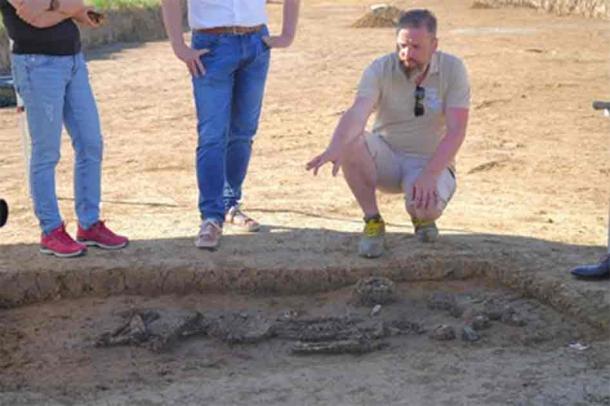6,800-Year-Old Skeleton Unearthed in Germany

Archaeologists have unearthed 6,800-year-old skeletal remains in Germany, significantly older than the region’s oldest known mummy, providing new insights into Neolithic life.
The skeleton is believed to belong to an aged leader of a community dating back to 4800 BCE, according to Florian Eibl, the district archaeologist leading the excavation.
This finding challenges existing theories about the timeline of settlement and cultivation in the region. Previously, the oldest known mummy, "Ötzi the Iceman," who died approximately 5,300 years ago in modern-day Bavaria, held this distinction.
“This sensational discovery shows us that there was fertile soil in the district 4,500 years ago. This discovery enables us to explore the past a little further,” stated Werner Bumeder, district administrator.The Neolithic period, spanning roughly from 10,000 BCE to 2,000 BCE, marked the transition from nomadic hunter-gatherer societies to settled agricultural communities. Skeletal remains from this period are rare.
“In Bavaria, there are fewer than 10 such body graves from this period,” Eibl mentioned during a press conference, as reported by local news outlet Passauer Neue Presse and quoted by Newsweek.
The grave included artifacts such as liquid containers, dyes likely used for body painting, and a stone axe. A small bag, adorned with halves of a boar’s tusk and containing fire-starting instruments, indicated the individual’s high status in the community. Archaeologists highlighted that the elaborate nature of the burial underscored the person’s reverence within the community.
Main Image :Archaeologist Florian Eibl from Dingolfing-Landau district beside the skeleton at the excavations at the village of Exing, near the Bavarian town of Eichendorf. Copyright Dingolfing-Landau District
